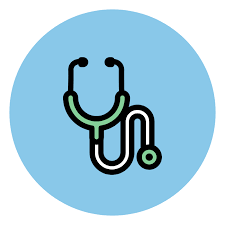Why I Don’t Cover Oral Ketamine
By Michael Alvear, Health Author & Independent Researcher
My research is published on these scholarly platforms:
Last Updated:
As someone who found healing through ketamine therapy, I want to share reliable, well-researched information about treatment options. I’ve chosen to focus this website on the three primary methods of administration: ketamine IV infusion, intramuscular injections, and the esketamine nasal spray (Spravato). Here’s a comprehensive explanation of why I’m not covering oral ketamine in depth, even though it’s an emerging treatment option.
Oral Ketamine Has Far Less Research Proving Its Effectiveness
The three main clinical methods have years of solid research behind them, with hundreds of studies showing how well they work and how safe they are when properly administered. Oral ketamine, while promising, simply doesn’t have the same level of research backing it up yet. We don’t fully understand the long-term effects of regular oral dosing or how tolerance might develop with more frequent home use. The lack of standardized protocols means treatment approaches vary widely between providers, making it difficult to assess overall effectiveness. As someone committed to providing you with evidence-based information, I feel more confident focusing on treatments with stronger scientific support.
It’s Hard to Get the Right Dose
Getting the right dose of oral ketamine involves more variables than you might expect. Everyone’s digestive system absorbs it differently, and factors like timing of meals, other medications, and even stress levels can affect absorption. This unpredictability makes it harder to ensure you’re getting the therapeutic dose you need.
In contrast, IV, injection, and nasal methods deliver precise doses directly into your system. This raises a critical question: can these smaller oral doses achieve the same level of efficacy for depression? The answer seems unclear at best and doubtful at worst, especially given that IV infusions are the gold standard because of their ability to deliver precise, high-dose treatments directly into the bloodstream. By contrast, oral ketamine not only has reduced bioavailability but also introduces the risk of inconsistent effects due to differences in how individuals metabolize it.
IV ketamine has nearly 100% bioavailability, intramuscular injections have about 93%, and intranasal administration ranges from 25-50%. In contrast, oral ketamine has much lower bioavailability, typically 16-24%.
One last thing: Oral ketamine can cause more nausea and vomiting due to its passage through the digestive system.
The Dangers of Home Use
While oral ketamine is typically prescribed at lower doses for home use, this raises several complex issues. The lower dosing, while necessary for safety, may not provide the same therapeutic impact as clinical treatments. Additionally, the home environment, though comfortable, presents unique challenges:
Storage safety becomes a serious concern, particularly in households with children or others who might access the medication. The potential for sharing or selling the medication, even unintentionally, creates both safety and legal risks. Regular access to the medication at home could potentially lead to psychological dependence in vulnerable individuals, particularly without the structured spacing of clinical treatments.
In a clinical setting, any adverse reactions can be addressed immediately by medical professionals. At home, patients might not recognize warning signs of complications or might hesitate to seek help. The dissociative effects of ketamine, even at lower doses, could be dangerous if an emergency situation arose requiring clear thinking and quick response.
The current system for prescribing oral ketamine varies significantly between providers. Unlike the standardized protocols of clinical administration, home use relies heavily on patient compliance with safety guidelines. And a lot can go wrong. Regular check-ins via telehealth, while helpful, can’t replace direct observation during treatment. Quality control of compounded medications can vary between pharmacies, adding another layer of uncertainty.
When Oral Ketamine Might Be Appropriate
Despite these concerns, oral ketamine could be a valuable option for certain patients. People with severe mobility issues or those living in remote areas might find this their only viable access to treatment. Individuals with intense anxiety about medical settings or those with agoraphobia might benefit from home treatment. It could also serve as an effective maintenance strategy after successful clinical treatment.
The lower cost compared to in-clinic treatment could make it accessible to more people, and the flexibility around work schedules and daily routines is significant. Some patients might benefit from more frequent but gentler interventions during crisis periods, which the home use model could facilitate.
More Research Might Make Oral Ketamine More Appealing
The field of ketamine therapy is continuously evolving, and oral ketamine may well establish itself as a more prominent treatment option as research progresses and protocols become standardized. Future studies might help us better understand optimal dosing, frequency, and monitoring requirements for home use. The development of more structured support systems and safety protocols could address many current concerns.
I’d Rather Stick With Proven Safety and Effectiveness
While expanding access to ketamine therapy is essential, safety and proven effectiveness must come first. IV, IM, and nasal spray methods have been rigorously tested through decades of research and clinical experience, offering a structured and supportive environment that ensures maximum therapeutic benefit while minimizing risks.
Oral ketamine, while promising for improving accessibility, comes with complexities that can’t be ignored. Unpredictable dosing, limited research, and a lack of standardized protocols make it less reliable compared to established methods. As research advances and protocols improve, oral ketamine may find its place in the treatment landscape. Until then, the most reliable path to safe and effective ketamine therapy lies in the well-established clinical methods detailed on this site.
Remember, my goal is to guide you toward treatment options with the strongest evidence base and safety protocols. While I acknowledge the potential role of oral ketamine in the future of depression treatment, I believe focusing on proven clinical methods best serves those seeking reliable information about ketamine therapy.



 How Ketamine is Different Than SSRIs
How Ketamine is Different Than SSRIs
Leave a Reply